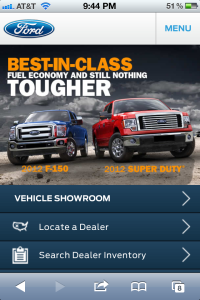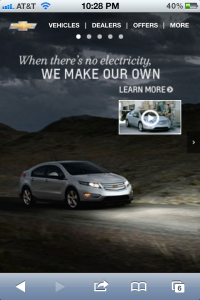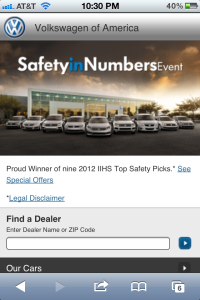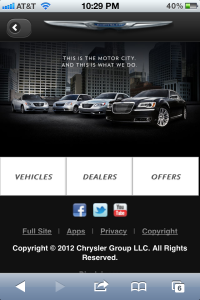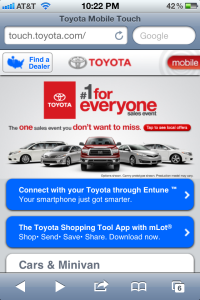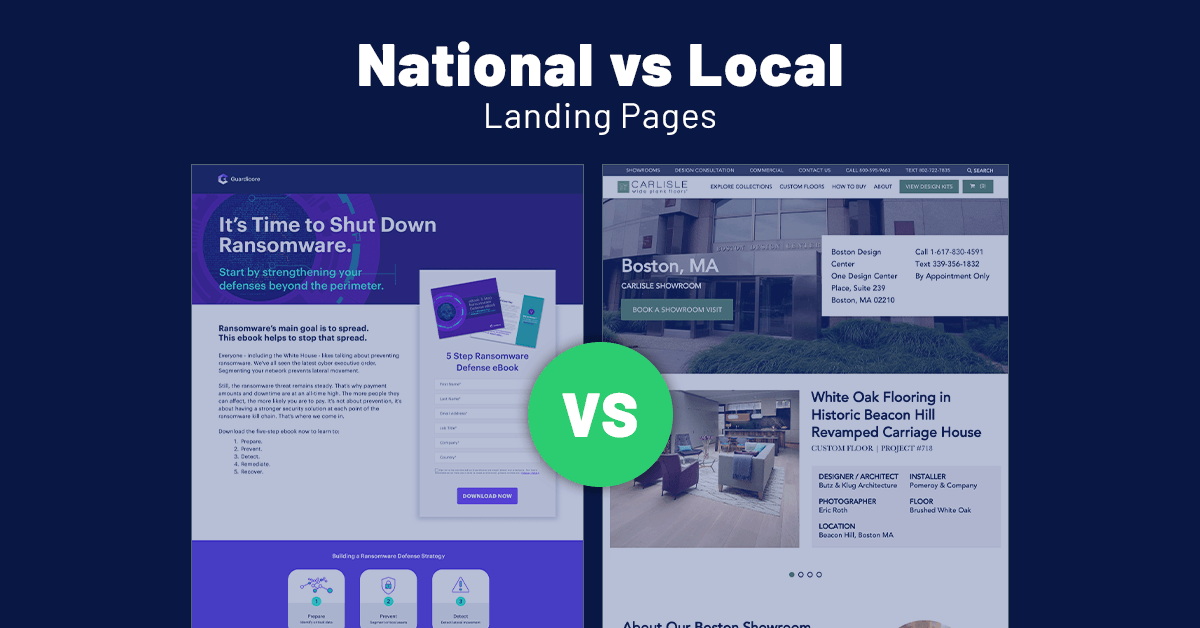Mobile search activity is on the rise across all search categories. The automotive sector is responding to the mobile traffic trends by rolling out robust mobile sites and mobile-specific paid search campaigns. While all of the manufacturers appear to be making strides, some auto makers are raising the bar in the mobile search channel with eye-catching, easy-to-use mobile sites, coupled with comprehensive mobile-specific PPC search campaigns.
Let’s take a look at which auto makers are leading in the race for mobile search supremacy.
The table below summarizes how some of the major auto makers stack up in terms of mobile-specific paid search programs and the usage/features of mobile optimized landing pages. The data below includes an analysis of paid search results for searches on auto makes (i.e. Ford) as well as specific auto models (Ford Mustang). All searches and site visits took place on an iPhone 4S. Paid search observations represent the snapshot in time when the searches were conducted, so variance can be expected based on factors including program changes.
[Y = Yes; N = No]
Click to Enlarge
Industry-Wide Improvements in the Mobile Search and Mobile Optimized Content
All manufacturers researched have created some type of mobile optimized site and are utilizing mobile paid search ads (at least for “make” terms) that pointed to a mobile optimized site or landing page.
Today’s landscape is very different than that a year ago when mobile automotive searches would frequently trigger paid ads that directed to standard site pages. In many cases these standard pages contained a good deal of Flash content, and were often incompatible with mobile devices. Previously, many of the content challenges were prevalent from an organic perspective as well. Now it appears that most automotive sites have implemented technology to recognize mobile devices and browsers in order to serve up mobile optimized content, ensuring a better experience for prospects.
Mobile Search and Site Observations by Manufacturer
Ford
Chevy
Audi
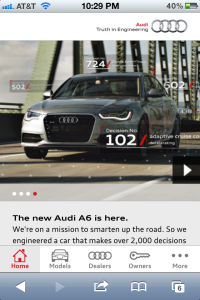
Audi is maximizing the mobile search channel with full coverage on multiple engines for make and model searches, with the latter driving to model specific pages. Sitelinks were utilized to drive users to special offers or the mobile dealer locator.
The Audi mobile site looks slick and includes calls to action for users to download mobile apps specific to each model family. Of all the mobile sites researched, Audi has the nicest model specific pages with multiple large high-resolution images and solid information architecture, making it easy to navigate through features, specs, and additional images.
VW uses mobile ads across multiple engines for the general make and specific model terms that lead to the model’s mobile page. Drill-down Sitelinks are used for special offers and a dealer locator tool.
While the VW mobile site is fully featured and easy to navigate, it is not as polished as the Audi’s or Ford’s. Calls to action are present but not as prominently featured. In addition, the model selection section uses much smaller images and text that detract from the overall experience.
Chrysler also makes the most out of mobile brand searches will full make and model coverage across multiple engines; however, standard “Chrysler” searches highlight the 300 model and drive users to this model’s mobile page.
The mobile site has clean navigation so backing out to the model selection page (for users not looking for the 300 model) is simple enough. Users, though, are brought to a model listings page with relatively small images that don’t appear to be optimized for the iPhone Retina Display. Clicking the logo drives users to a splash page that would be a better destination for searches that don’t specify a model name. While the site isn’t quite as eye-appealing, most of the functionality users would expect is in place. Chrysler also features the “build your model” link, but it leads to the non-mobile site that doesn’t function or render well on mobile devices.
Toyota searches for model and make terms triggered ads only on Google. Additionally, mobile ad extensions were not utilized to point users to more relevant content.
Toyota’s mobile site is a much brighter environment, using a white and light grey theme that makes text easy to read. However, navigation elements are not clearly presented, and the information architecture was not as well thought out. Images are also small on the main page, and some of the calls to action are almost too small to read or click, creating a less than optimal mobile experience. One prominent call to action highlighted the Toyota “Entune” technology which links the car to mobile devices for additional features. Toyota also features a call to action on the splash page for users to download a free Toyota shopping tool application.
Final thoughts on the race to mobile supremacy…
It is clear that as a whole, the main players in the auto vertical are well aware of the increased importance of serving relevant information to prospects that are using mobile devices. Industry-wide mobile search and content optimization is clearly a big priority for auto makers, as evidenced by the improvements made in mobile sites and mobile search programs in recent months.
While most manufacturers have made great progress recently, Ford and Audi seem to be at the head of the pack from a mobile design perspective based on their eye-catching, well-designed, easy-to-use mobile sites. Both sites feature a breadth of relevant information without overwhelming users. Both auto makers make it easy for mobile users to engage in meaningful brand interactions that help propel users through the sales funnel, which can ultimately help create and retain more customers. Audi has also implemented a robust mobile paid search strategy that utilizes unique ads and mobile destination pages for each model. Based on the findings, Audi seems to be at the head of the pack when it comes to connecting with prospects that are using mobile devices.




